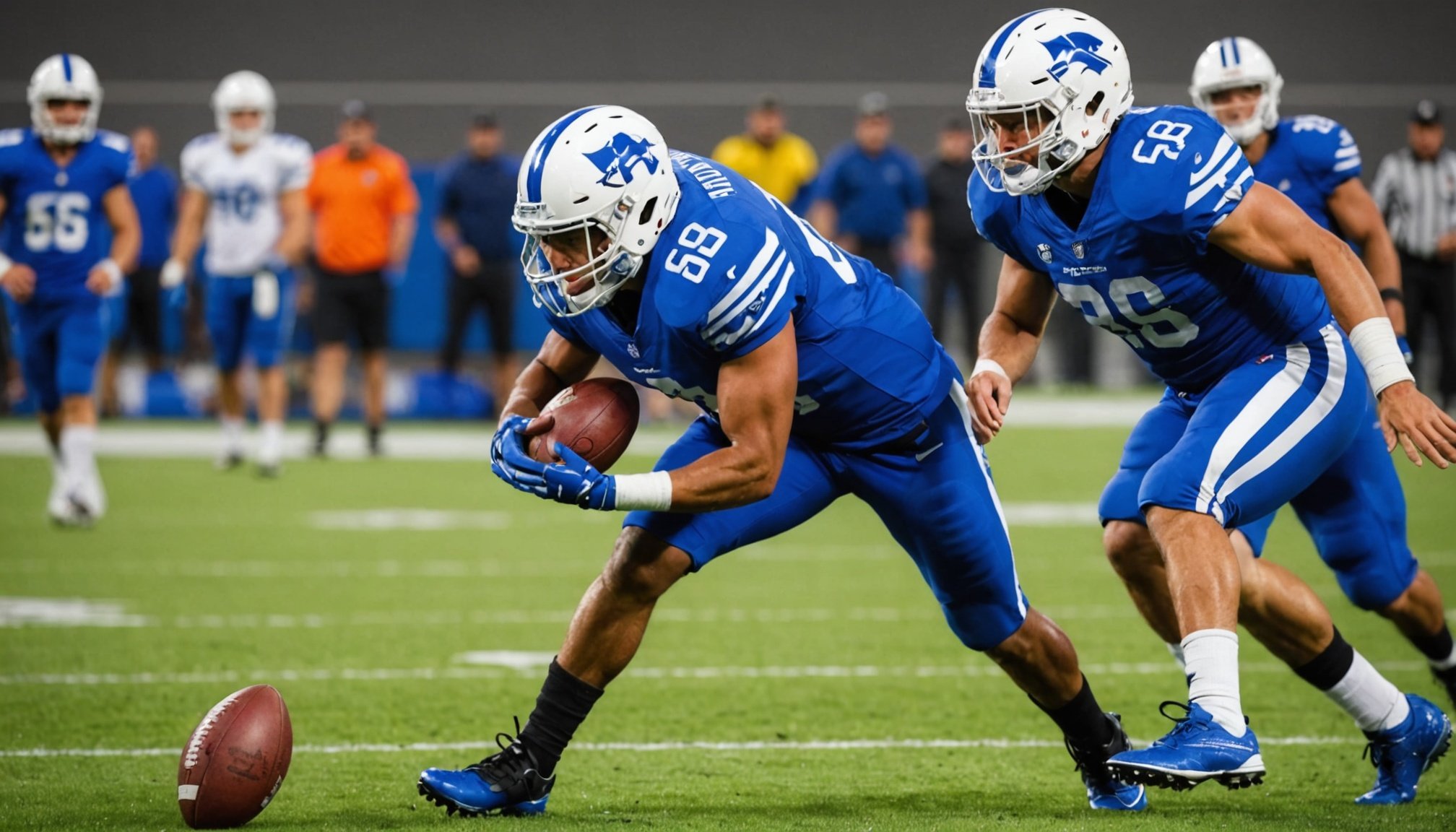Effective Strategies to Minimize ACL Injury Risks in Football: Proven Techniques Revealed
Understanding ACL Injuries: The Risks and Consequences
Anterior Cruciate Ligament (ACL) injuries are a significant concern in the world of football, affecting athletes at all levels, from amateur players to professional stars. These injuries are not only painful and debilitating but can also have long-term consequences, potentially ending a player’s career.
To grasp the severity of ACL injuries, it’s crucial to understand the risk factors involved. Studies have shown that athletes, particularly those in sports that require sudden stops and changes in direction, are more prone to ACL tears. Women, for instance, are at a higher risk compared to men due to anatomical differences, such as a narrower notch in the knee where the ACL sits.
Also read : Top Cooling Down Techniques for Football Players: Maximize Recovery Post-Training!
ACL Injury Risk Factors
- Athletic Participation: Athletes involved in sports like football, soccer, and basketball are at a higher risk due to the dynamic movements required.
- Gender: Women are more susceptible to ACL injuries due to anatomical and hormonal differences.
- Wear and Tear: Overuse of the knee joint can weaken it over time, increasing the risk of an ACL tear.
- Previous Injuries: A history of previous knee injuries can increase the likelihood of an ACL injury.
Prevention Through Training and Conditioning
Preventing ACL injuries involves a multifaceted approach that includes strength training, proper technique, and comprehensive conditioning programs.
Strength Training
Focusing on strength training to enhance the muscles around the knee is critical. Here are some key exercises and tips:
Additional reading : Winning Strategies: Top Tactical Changes for Football Teams in Challenging Wet Weather
- Hamstring and Quadriceps Strengthening: Exercises like deadlifts, leg curls, and hamstring bridges help stabilize the knee joint during dynamic movements.
- Core and Hip Strengthening: Strong core and hip muscles provide additional stability and support to the knee.
- Balance and Proprioception: Incorporating balance exercises can improve stability and reduce the risk of awkward landings or sudden twists that might cause injuries.
Proper Technique and Landing Mechanics
Proper technique in sports, especially in landing from jumps, is vital. Here are some tips:
- Soft Landing: Encourage athletes to land softly from jumps, rolling with the impact rather than absorbing it with a straight knee.
- Knee Alignment: Ensure that knees are aligned with the toes during jumps and landings to reduce the stress on the ACL.
- Plyometric Training: Incorporate plyometric exercises that mimic game scenarios to improve reaction time and landing mechanics.
Comprehensive Conditioning Programs
Conditioning programs tailored to reduce ACL injury risk are increasingly popular and effective.
FIFA 11+ Warm-Up Program
The FIFA 11+ warm-up program is a well-regarded example of an exercise-based injury prevention program. This program includes a series of exercises designed to improve strength, flexibility, and coordination.
- Dynamic Stretching: Includes leg swings, lunges, and other dynamic stretches to prepare muscles for exercise.
- Strengthening Exercises: Focuses on strengthening the core, hip, and leg muscles.
- Plyometric and Agility Drills: Incorporates jumps, shuttle runs, and other agility drills to improve reaction time and movement skills.
Table: Comparison of ACL Injury Prevention Programs
| Program | Key Components | Targeted Muscle Groups | Effectiveness |
|---|---|---|---|
| FIFA 11+ | Dynamic stretching, strengthening exercises, plyometric and agility drills | Core, hip, leg muscles | Significant reduction in ACL injuries |
| ACL Prevention Program | Strength training, balance and proprioception exercises, proper landing mechanics | Hamstrings, quadriceps, core | Reduced ACL injury rates in studies |
| General Conditioning | Warm-ups, cool-downs, lower limb strengthening exercises | Lower limb muscles | General injury reduction, including ACL |
The Role of Physical Therapy in ACL Injury Prevention and Recovery
Physical therapy plays a crucial role in both preventing ACL injuries and aiding in the recovery process.
Preventive Measures
- Regular Assessments: Physical therapists can identify individual risk factors and tailor prevention programs.
- Customized Training: Programs can be designed to address specific weaknesses and improve overall knee stability.
Recovery Process
For athletes who do suffer an ACL injury, physical therapy is instrumental in the recovery process.
- Post-Surgery Rehabilitation: Focuses on regaining strength, flexibility, and range of motion. This includes exercises like leg presses, leg extensions, and balance training.
- Non-Surgical Treatment: For minor tears, physical therapy can help strengthen the surrounding muscles and restore mobility without surgery.
Quotes from Experts
- “Understanding ACL tear causes is crucial for developing effective prevention strategies to reduce the likelihood of injury among athletes and active individuals,” – Metropolis Healthcare.
- “There’s a thing called the notch of the knee and it’s where the ACL sits inside the notch. In females, it tends to be slightly narrower than males and that’s one reason why it could be an increased risk,” – Dr. Daniel Withers, Consultant Orthopaedic Surgeon.
Real-World Examples and Success Stories
The Republic of Ireland women’s football team has been significantly affected by ACL injuries, with several players, including Jess Ziu, suffering from this issue. However, with advanced surgical techniques and comprehensive rehabilitation programs, many athletes are able to return to their sport.
- Jess Ziu’s Recovery: After suffering her second ACL injury, Ziu underwent surgery and is now in the recovery phase. Her case highlights the importance of thorough rehabilitation and the potential for athletes to return to peak performance levels.
Tips for Football Players to Minimize ACL Injury Risk
Here are some practical tips for football players to reduce their risk of ACL injuries:
Warm-Up and Cool-Down Routines
- Dynamic Stretching: Include leg swings, lunges, and other dynamic stretches in your warm-up routine.
- Cool-Downs: Spend at least 10 minutes cooling down after a game or practice, focusing on low-intensity cardiovascular exercise and stretching.
Proper Gear and Hydration
- Wear the Right Gear: Ensure you have good boots and shin guards to protect your lower limbs.
- Stay Hydrated: Drink plenty of water before, during, and after games and practices to maintain muscle health.
Balanced Diet and Rest
- Eat a Healthy Diet: Focus on a balanced diet that includes proteins, carbohydrates, and healthy fats to support muscle health.
- Adequate Rest: Ensure you get enough sleep and take rest days from training to allow your muscles to recover.
ACL injuries are a serious concern in football, but with the right strategies, athletes can significantly reduce their risk. By focusing on strength training, proper technique, and comprehensive conditioning programs, football players can protect their knees and ensure a long and healthy career in the sport.
Incorporating programs like the FIFA 11+ and working closely with physical therapists can make a substantial difference. Remember, prevention is key, and a well-structured approach can help athletes avoid the debilitating consequences of ACL injuries.
As Dr. Daniel Withers emphasized, understanding the causes and implementing effective prevention strategies are crucial. By doing so, we can help athletes stay on the field and perform at their best.











